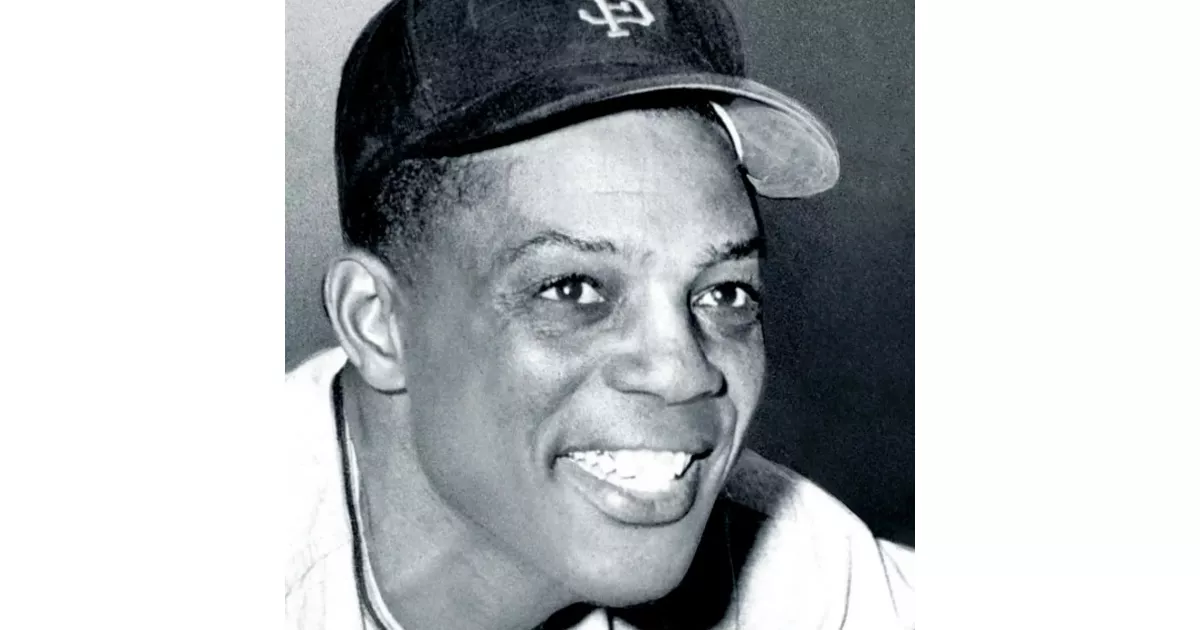Willie Mays, "the Say Hey Kid," was a legendary MLB center fielder over 23 seasons. He began in the Negro leagues before joining the New York/San Francisco Giants and New York Mets in the National League. Considered one of baseball's greatest, Mays was a five-tool player renowned for his all-around excellence.
1911: Frank Schulte 20-20-20
In 1911, after Frank Schulte was a member to steal at least 20 bases.
1926: Birth of Marghuerite Wendell Chapman
Marghuerite Wendell Chapman, who became Willie Mays's first wife, was born in 1926.
1930: Bill Terry's Batting Title
In 1930, Bill Terry won the team's first batting title since then.
May 6, 1931: Willie Mays Born
On May 6, 1931, Willie Howard Mays Jr., later nicknamed "the Say Hey Kid", was born. He went on to become a celebrated baseball player.
1945: Comparison to post-1945 players
In 1945, Mays's 140 triples ranked fourth among players active after 1945.
1948: Joined Birmingham Black Barons
In 1948, Willie Mays joined the Birmingham Black Barons of the Negro American League, marking an early step in his baseball career.
1948: 1948 Birmingham Black Barons Season Statistics
Information includes statistics for Willie Mays's 1948 season with the Birmingham Black Barons.
1948: 1948 Negro World Series Appearance
Willie Mays participated in 33 postseason games, including the 1948 Negro World Series where he batted .248.
1949: High School Years
In 1949, Willie Mays was still attending Fairfield Industrial High School, where he played multiple sports.
1950: High School Graduation
In 1950, Willie Mays graduated from Fairfield Industrial High School.
1950: Joined Trenton Giants
In 1950, Willie Mays spent the latter part of the year with the Class B Trenton Giants after being signed by the New York Giants.
May 24, 1951: Called Up by the Giants
On May 24, 1951, Willie Mays was called up by the New York Giants, marking his entry into Major League Baseball.
1951: Played in the World Series
In 1951, Willie Mays played in the World Series with the New York Giants, where they faced the New York Yankees. Mays struggled at the plate and the Giants lost the series in six games.
1951: Promoted to Minneapolis Millers
In 1951, Willie Mays was promoted to the Triple-A Minneapolis Millers, where he demonstrated exceptional batting skills before being called up to the major leagues.
1951: Rookie of the Year Award
In 1951, Willie Mays won the National League Rookie of the Year Award after an impressive season with the New York Giants.
1951: Drafted into the Army
In 1951, soon after the baseball season, Willie Mays was drafted into the United States Army to serve in the Korean War.
1951: Mention of 1951 Mays Rookie Card
The plot of the Star Trek: Deep Space Nine episode "In the Cards" centers on the son of Captain Sisko (a noted baseball aficionado) attempting to obtain as a gift for his father a vintage 1951 Willie Mays rookie card.
1951: 1951 World Series Appearance
Willie Mays participated in 33 postseason games, including the 1951 World Series where he batted .248.
1952: Played final games before Army service
In 1952, before joining the Army, Willie Mays played a few weeks with the Giants, receiving cheers even from rival Brooklyn Dodgers fans.
July 28, 1953: Injury at Fort Eustis
On July 28, 1953, while playing for the Fort Eustis Wheels, Willie Mays chipped a bone in his foot, sidelining him for six weeks.
March 1, 1954: Discharge from Army
On March 1, 1954, Willie Mays was discharged from the Army and reported to the Giants' spring training camp the following day.
1954: "Say Hey (The Willie Mays Song)" Recorded
In 1954, The Treniers recorded "Say Hey (The Willie Mays Song)", in which Willie Mays himself participated.
1954: Mays Adjusts Batting Style in 1954 for Higher Average
In 1954, Willie Mays adjusted his batting style to hit more to right and center field to improve his batting average, as requested by his manager.
1954: Increased Base Stealing
In 1954, Willie Mays increased his base stealing total, showcasing his growing versatility as a player.
1954: "The Catch" and World Series Win
In 1954, Willie Mays made "The Catch" during Game 1 of the World Series, helping the Giants sweep the Cleveland Indians to win the championship.
1954: Mays vies for NL batting title
In 1954, Willie Mays vied for the NL batting title.
1954: NL MVP Award and World Series Title
In 1954, Willie Mays won the NL Most Valuable Player (MVP) Award and led the Giants to a World Series title.
1954: MVP Award and Batting Title
In 1954, Willie Mays won the NL Most Valuable Player Award and the batting title, capping off a stellar season.
1954: Mays steals 8 bases, the fewest since 1954
Willie Mays stole only eight bases in 1963, his fewest since 1954.
1954: Mays's New York Giants Win World Series
Willie Mays was the last surviving member of the 1954 World Champion New York Giants.
1954: Mays' "The Catch" During the 1954 World Series
Willie Mays' signature play was his basket catch technique and "The Catch" in the 1954 World Series.
1955: Mays' All-Stars Attract Crowds in 1955
In 1955, Willie Mays led Willie Mays' All-Stars, drawing crowds of about 5,000 during their barnstorming tour in the southern United States.
1955: 51 Home Runs
In 1955, Willie Mays led the league with 51 home runs, though he finished fourth in NL MVP voting.
1956: Declining Attendance for Mays's Barnstorming Team in 1956
In 1956, Mays' All-Stars drew less than 1,000 fans, partially due to television's emergence.
1956: Joins the 30-30 Club
In 1956, Willie Mays joined the 30–30 club, hitting 36 home runs and stealing a career-high 40 bases.
1956: Mays Marries Chapman
In 1956, Willie Mays married Marghuerite Wendell Chapman, becoming her third husband.
1956: Mays's First Marriage
In 1956, Willie Mays's participation in local stickball games with kids decreased due to his first marriage.
1956: Mays bats under .300 for first time since 1956
In 1964, Willie Mays batted under .300 (.296) for the first time since 1956.
September 29, 1957: Final Game at Polo Grounds
On September 29, 1957, during the final Giants' home game at the Polo Grounds, fans gave Willie Mays a standing ovation during his last at-bat, marking the end of an era.
1957: Joins 20-20-20 club
In 1957, Mays became the fourth player in major league history to join the 20–20–20 club (doubles, triples, homers).
1957: Mays Leads All-Stars to Success in 1957
In 1957, Willie Mays led his All-Stars in Mexico, Puerto Rico, and the Dominican Republic, drawing large crowds and winning most of their games.
1957: Mays wins First Gold Glove
In 1957, Willie Mays won the first Gold Glove award, recognizing his defensive play as a Center Fielder.
1957: First Gold Glove Award
In 1957, Willie Mays won the first of 12 consecutive Gold Glove Awards, recognizing his exceptional defensive skills in center field.
1957: Housing Discrimination Against Mays
In 1957, Willie Mays's offer on a home in Sherwood Forest was refused due to neighbors' racial prejudice.
1958: Rigney limits Mays' spring training, Mays vies for batting title
In 1958, Giants' manager Rigney limited Willie Mays' spring training appearances, hoping to keep him fresh for the regular season. Mays also vied for the NL batting title, finishing with a career-high .347 average.
1958: Mays's Barnstorming Tour in Mexico in 1958
In 1958, Willie Mays' All-Stars played 20 games in Mexico as part of their barnstorming tour.
1958: First time since 1958 Mays failed to reach 100 RBI.
In 1967, was the first time since 1958 Willie Mays failed to reach 100 RBI.
September 1959: Giants lose pennant lead, fans boo Mays
In September 1959, the Giants lost their lead in the NL pennant race after being swept by the Dodgers, leading to some San Francisco fans booing Willie Mays.
1959: Mays Adopts Michael
In 1959, Willie Mays and his wife, Marghuerite, adopted a five-day-old baby named Michael.
1959: Mays Rests from Barnstorming in 1959 Due to Injury
In 1959, Willie Mays did not lead a team in barnstorming due to a broken finger, as Stoneham wanted him to rest.
1959: Mays deals with booing from fans
In 1959, Willie Mays endured booing from San Francisco fans, potentially due to comparisons with Joe DiMaggio.
1959: Mays' All-Star Game Performance in 1959
In the first All-Star Game of 1959, Willie Mays hit a game-winning triple against Whitey Ford, showcasing his skill and contributing to his team's victory.
1960: Giants Exhibition Series in Tokyo in 1960
In 1960, Willie Mays and the Giants played an exhibition series of 16 games against the Yomiuri Giants in Tokyo.
1960: Giants move to Candlestick Park, Mays adjusts to winds
In 1960, the Giants moved to Candlestick Park. Willie Mays found the stadium tricky to field due to unpredictable winds, but figured out how to play it as the season progressed. On September 15, Mays tied an NL record with three triples.
April 30, 1961: Mays hits four home runs in a game
On April 30, 1961, Willie Mays hit four home runs and drove in eight runs against the Milwaukee Braves at County Stadium.
1961: Mays admits boos are bothering him, boos subside after four-home-run game
In 1961, Willie Mays admitted that the catcalls were bothering him, but the booing began to subside after his four-home-run game.
1961: Mays Declines Barnstorming in 1961
In 1961, Willie Mays again decided not to barnstorm, leading to the decline of the tradition due to factors like major league expansion and television.
1961: Mays Receives Allen's Number
In 1961, Wilt Chamberlain gave Willie Mays Mae Louise Allen's phone number.
1961: Mays Scores Winning Run in the 1961 All-Star Game
Willie Mays scored the winning run in the bottom of the 10th inning of the first All-Star Game of 1961, contributing to a 5-4 victory for the National League.
1962: Mays leads Giants, advances to World Series
In 1962, Willie Mays led the Giants in eight offensive categories. On September 30, Mays hit a game-winning home run to force a tie for first place. He then caught the final out in the playoff series, advancing the Giants to the World Series.
1962: Giants in the World Series
In 1962, Willie Mays led the San Francisco Giants to the World Series, though they lost to the New York Yankees.
1962: Mays Separates From Wife
In 1962, Willie Mays separated from his wife, Marghuerite Wendell Chapman.
1962: Booing quiets down, Giants enjoy best season
In 1962, the booing of Willie Mays grew quieter as the Giants enjoyed their best season since moving to San Francisco.
1962: Mays Returns to Playoffs Since 1962
The Giants won the NL West in 1971, marking Mays's return to the playoffs for the first time since 1962.
1963: Bob Dylan Mentions Mays
In 1963, Bob Dylan mentioned Willie Mays in “I Shall Be Free”, released on The Freewheelin Bob Dylan.
1963: A Man Named Mays Documentary
In 1963, NBC-TV aired an hour-long documentary titled A Man Named Mays, telling the story of the ballplayer's life.
1963: Mays Divorces Chapman
In 1963, Willie Mays and Marghuerite Wendell Chapman divorced, with Marghuerite taking Michael.
1963: Mays hits 16th-inning home run, wins Player of the Month, hits 400th home run
In 1963, Willie Mays hit a 16th-inning home run off Warren Spahn. In August 1963, he won his third NL Player of the Month Award. On August 27, 1963, he hit his 400th home run against the St. Louis Cardinals.
1964: Dark names Mays Giants' captain, Mays makes acrobatic catch
In 1964, Alvin Dark named Willie Mays the Giants' captain, making him the first African-American captain of an MLB team. On September 4, 1964, Mays made an acrobatic catch against the Phillies.
August 1965: Mays wins Player of the Month award
In August 1965, Willie Mays won his fourth and final NL Player of the Month award.
1965: Mays injured, acts as peacemaker in brawl
In 1965, Willie Mays sustained a torn shoulder muscle. On August 22, 1965, Mays acted as a peacemaker during a brawl between the Giants and Dodgers, and hit a game-winning home run but felt dizzy afterwards.
1965: Second MVP Award
In 1965, Willie Mays won his second NL Most Valuable Player Award while playing for the San Francisco Giants.
1965: Willie Stargell Amazed by Mays' Arm
In 1965, Willie Stargell was thrown out by Willie Mays's throw and expressed astonishment at the distance and strength of Mays's arm.
1965: Mays Sets All-Star Hit Record in 1965
With a leadoff home run against Milt Pappas in the 1965 All-Star Game, Willie Mays set a record for the most hits in his All-Star Games, totaling 21.
April 24, 1966: Mays ties Mel Ott's home run record
On April 24, 1966, Willie Mays tied Mel Ott's NL record of 511 home runs against the Astros.
1967: Mays struck out four times, afflicted by fever
In 1967, Willie Mays was struck out four times for the first time in his career, and he left a game on July 14, 1967, due to a fever, spending five days in the hospital.
May 6, 1968: Astros present Mays with birthday cake
On May 6, 1968, Astros owner Roy Hofheinz presented Willie Mays with a 569-pound birthday cake for his 37th birthday.
1968: Mays Wins MVP at the 1968 All-Star Game
Willie Mays won the All-Star Game MVP Award for the second time in 1968 due to his contributions during the game.
1969: Mays moved to leadoff position, hits 600th home run
In 1969, Willie Mays was moved to the leadoff position. He injured his knee in a collision with catcher Randy Hundley on July 29, 1969. On September 22, 1969, he hit his 600th home run.
January 1970: Mays named Player of the Decade
In January 1970, The Sporting News named Willie Mays the 1960s "Player of the Decade".
1971: Mays's Performance and Team Success in 1971
In 1971, Willie Mays, while primarily playing center field, also played 48 games at first base. He had a strong start to the year, including a notable game on May 31 against the Mets where he hit a game-tying home run and made key defensive plays. He finished the season with a .271 batting average, 18 home runs, and 61 RBI, leading the league in on-base percentage. The Giants won the NL West that year, marking Mays's return to the playoffs since 1962.
1971: Mays in the 1971 NL Championship Series and Clemente Award
In the 1971 NL Championship Series against the Pirates, Willie Mays contributed with a home run and three RBIs in the first two games. After the season, Mays was honored with the inaugural Roberto Clemente Award. The Giants would ultimately lose the series.
1971: 1971 NLCS Postseason Stats
Willie Mays participated in 33 postseason games, including the 1971 NLCS where he batted .248.
May 11, 1972: Mays Traded to the Mets on May 11, 1972
On May 11, 1972, Willie Mays was traded to the New York Mets for pitcher Charlie Williams and an undisclosed amount of money. His salary was maintained, and the Mets promised additional payments after his retirement.
May 1972: Giants Retired Mays's Number
In May 1972, the Giants retired Willie Mays's number 24.
1972: Mays Traded to the Mets
In 1972, Mays was traded to the Mets, during which Joan Payson promised Mays she would retire his number.
1972: Mays's Debut with the Mets in 1972
In 1972, Willie Mays debuted with the New York Mets, hitting a home run in his first game against the Giants on May 14 and receiving a warm welcome from the fans. He played 69 games for the Mets that season, batting .267 with eight home runs and 19 RBIs.
1972: Willie Mays and the Say-Hey Kid
In 1972, Willie Mays voiced himself in the animated fictional special Willie Mays and the Say-Hey Kid.
1972: Mays' Difficult Start and Contract Negotiations in 1972
Willie Mays had a slow start to the 1972 season, batting .184 with 3 RBI in his first 19 games. Before the season, he negotiated a two-year contract with the Giants after his request for a longer-term agreement was not met. He also had disagreements with manager Charlie Fox.
August 17, 1973: Mays Hits Final Home Run on August 17, 1973
On August 17, 1973, Willie Mays hit his 660th and final home run against Don Gullett of the Reds. He officially announced his retirement on September 20, stating that 1973 would be his last season.
October 16, 1973: Mays's Last At-Bat in Game 3 of the World Series on October 16, 1973
On October 16, 1973, Willie Mays had his final at-bat in Game 3 of the World Series, pinch-hitting and grounding into a force play. The Mets would lose the series in seven games. He also helped restore order after fans threw trash at Pete Rose.
1973: Challenges and All-Star Selection in 1973
In 1973, Willie Mays faced challenges, including arriving late to spring training and disagreements with manager Yogi Berra. His performance declined, but he made the All-Star team due to special intervention. Despite the challenges, the Mets won the NL East.
1973: Retirement after the World Series
In 1973, Willie Mays retired after the New York Mets reached the World Series.
1973: Contract Considerations in 1973
The Mets agreed to keep Willie May's salary at $165,000 a year for 1972 and 1973, promising to pay Mays $50,000 a year for 10 years after he retired.
1973: 1973 World Series Appearance
Willie Mays participated in 33 postseason games, including the 1973 World Series where he batted .248.
1975: Mays's Absences with the Mets
In 1975, Joe McDonald threatened to fire Willie Mays from the Mets due to Mays's frequent absences.
1976: Mays Invited to White House Dinner
In 1976, Willie Mays was invited to the White House state dinner honoring Queen Elizabeth II during Gerald Ford's administration.
January 23, 1979: Mays Elected to Baseball Hall of Fame on January 23, 1979
On January 23, 1979, Willie Mays was elected to the Baseball Hall of Fame in his first year of eligibility, receiving 94.68% of the votes.
October 1979: Mays Joins Bally's Casino
In October 1979, Willie Mays accepted a job at Bally's Park Place casino and terminated his contract with the Mets.
1979: Mays's Instructor Role Ends
At the end of the 1979 season, Willie Mays's time as a hitting instructor for the New York Mets came to an end.
1979: Elected to Baseball Hall of Fame
In 1979, Willie Mays was elected to the Baseball Hall of Fame in his first year of eligibility, solidifying his legacy as one of baseball's greats.
1979: Mays Elected to Hall of Fame
In 1979, Willie Mays was the only player elected to the Hall of Fame, with Duke Snider acknowledging that Mays deserved to be in by himself.
1981: "Talkin' Baseball" references Mays
In 1981, Terry Cashman's "Talkin' Baseball (Willie, Mickey & The Duke)" referenced Willie Mays.
1985: Mays Reinstated to Baseball
In 1985, Peter Ueberroth reinstated Willie Mays to baseball after he had been banned due to his association with a casino.
1985: Mays at Pittsburgh drug trials
In 1985, during the Pittsburgh drug trials, former teammate John Milner testified that Mays kept liquid amphetamine in his locker. Mays denied ever using amphetamines.
1986: Mays Becomes Special Assistant to the Giants
In 1986, Willie Mays was named special assistant to the president and general manager of the Giants.
1993: Mays Signs Lifetime Contract
In 1993, Willie Mays signed a lifetime contract with the Giants.
1997: Allen Diagnosed with Alzheimer's
In 1997, Mae Louise Allen was diagnosed with Alzheimer's disease.
1997: Willie Mays Rookie Card in Star Trek
In 1997, the Star Trek: Deep Space Nine episode "In the Cards" centered on a vintage 1951 Willie Mays rookie card.
1999: Named to All-Century Team
In 1999, Willie Mays was named to the Major League Baseball All-Century Team, recognizing him as one of the greatest players of the 20th century.
2000: Pac Bell Park Opens
In 2000, Willie Mays helped muster enthusiasm for building Pac Bell Park, which opened that year.
2004: Willie Mays Considered the Best
In 2004, Barra claimed that most modern fans would pick Willie Mays as the best all-around player in the second half of the twentieth century.
2005: Mays Stops Driving and Playing Golf
After 2005, glaucoma forced Willie Mays to stop driving a car and playing golf.
July 30, 2006: Mays at White House Tee Ball
On July 30, 2006, Willie Mays was the Tee Ball Commissioner at the White House Tee Ball Initiative during George W. Bush's presidency.
2008: Mays Inaugural Class for Wall of Fame
In 2008, Willie Mays became part of the inaugural class of the Giants' Wall of Fame.
July 14, 2009: Mays Accompanies Obama to All-Star Game
On July 14, 2009, Willie Mays accompanied Barack Obama to St. Louis aboard Air Force One for that year's All-Star Game.
2010: Biography of Mays
In James S. Hirsch's 2010 authorized biography of Mays, it was written Mays had "one of his most exhilarating excursions" on April 21 in the game against the Phillies.
2010: Death of Marghuerite Wendell Chapman
Marghuerite Wendell Chapman, Willie Mays's first wife, passed away in 2010.
April 19, 2013: Death of Mae Louise Allen
On April 19, 2013, Mae Louise Allen, Willie Mays's second wife, passed away after battling Alzheimer's disease.
2015: Awarded Presidential Medal of Freedom
In 2015, Willie Mays was awarded the Presidential Medal of Freedom by President Barack Obama, honoring his contributions to baseball and American culture.
September 2017: MLB Renames World Series MVP Award
In September 2017, Major League Baseball renamed the World Series MVP Award the Willie Mays World Series MVP Award.
2018: Mays' vision loss
In 2018, Mays told Ed Lucas he had gone blind.
2020: Mays Ranked #1 on "Baseball 100" List in 2020
In 2020, The Athletic ranked Willie Mays at number 1 on its "Baseball 100" list, compiled by sportswriter Joe Posnanski.
June 2021: Mays' Games Played Ranking
As of June 2021, Willie Mays's 2,992 games played is the ninth-highest total of any major leaguer.
2021: Mays' 90th birthday
In 2021, James S. Hirsch wrote that Mays' vision was compromised but he was still able to watch games on television.
August 27, 2022: Mets to Retire Mays's Number
On August 27, 2022, during the Mets' 60th anniversary Old-Timer's Game, the team announced that they would retire Willie Mays's number 24.
2022: Mays Voted Greatest Player in Giants History in 2022
In 2022, MLB.com writers voted Willie Mays as the greatest player in the history of the Giants franchise.
May 28, 2024: MLB Integrated Negro League Statistics
On May 28, 2024, Major League Baseball announced that it had integrated Negro league statistics into its records, enhancing the recognition of players like Willie Mays during his time with the Birmingham Black Barons.
June 18, 2024: Willie Mays's Death
On June 18, 2024, Willie Howard Mays Jr., "the Say Hey Kid," passed away after a legendary career.
June 20, 2024: Tributes for Mays at Rickwood Field Game
On June 20, 2024, during the game at Rickwood Field, the San Francisco Giants wore a patch with "24" and his Hall of Fame plaque was displayed. His son spoke before the game.
December 2024: Mays's Ranking Among Baseball Leaders
As of December 2024, Willie Mays ranks sixth in home runs with 660, seventh in runs scored with 2,068, and 12th in runs batted in with 1,909.
December 2024: Mays' Career Statistics Ranking
As of December 2024, Willie Mays's career batting average stands at .301, and his 3,293 hits rank 12th-most of any player.
Mentioned in this timeline
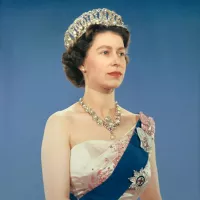
Elizabeth II reigned as Queen of the United Kingdom and...
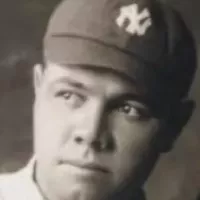
Babe Ruth nicknamed the Bambino and the Sultan of Swat...
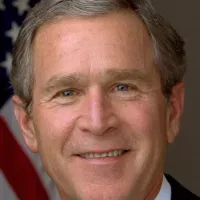
George W Bush the rd U S President - is...
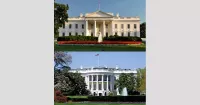
The White House located at Pennsylvania Avenue NW in Washington...
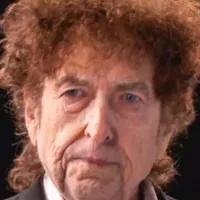
Bob Dylan is a highly influential American singer-songwriter renowned as...
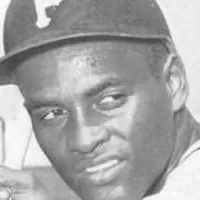
Roberto Clemente was a celebrated Puerto Rican baseball player for...
Trending
Montesano is a city located in Grays Harbor County Washington and serves as the county seat According to the census...

2 hours ago 10-Month-Old Girl Found Safe in Charlotte After Amber Alert; Suspects Arrested

2 months ago Kyle Tucker Player Props and Chicago Cubs' Distrust in Wild Card Series

5 months ago Francis Ngannou Returns to UFC Atlanta, Kickboxing Fight Challenged

1 month ago Gleyber Torres Leads Tigers in ALDS Game 1; Greene & Torkelson Prop Bets
2 days ago Switzerland Secured US Trade Deal by Lobbying Trump with Gifts and Diplomacy
Popular

XXXTentacion born Jahseh Dwayne Ricardo Onfroy was a controversial yet...

Cristiano Ronaldo often nicknamed CR is a Portuguese professional footballer...

Candace Owens is an American conservative political commentator and author...

William Franklin Graham III commonly known as Franklin Graham is...
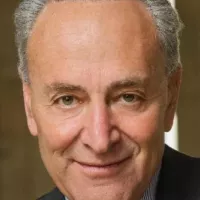
Chuck Schumer is the senior United States Senator from New...

Vivienne Westwood was a highly influential English fashion designer and...
